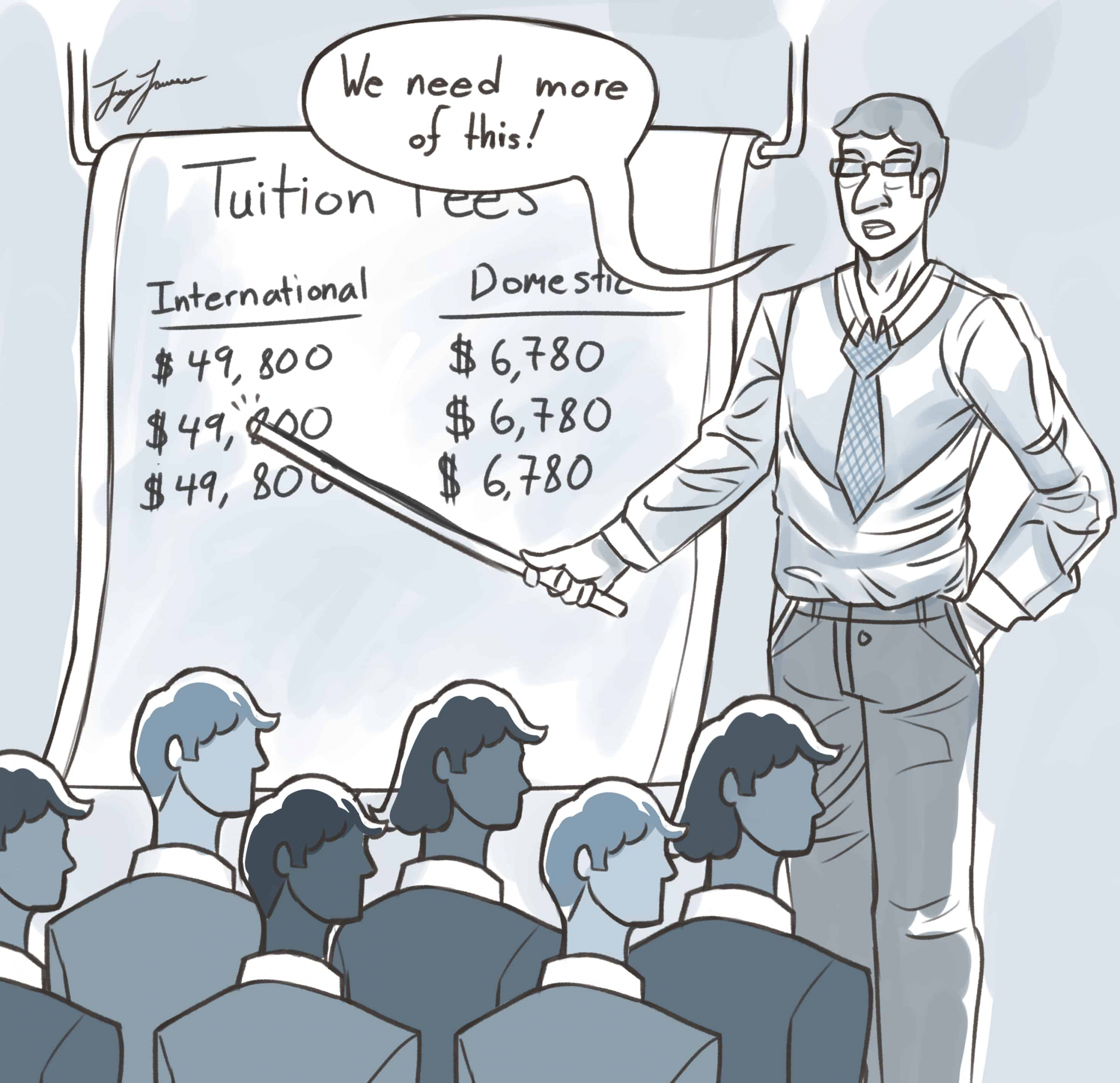People often ask international students like me about our reason for coming to U of T, where we make up 21 per cent of the student body. For most, the answer remains rooted in U of T’s world-class reputation, the nature of its academic environment and, most importantly, the competitive quality of teaching one can expect to receive during their time here.
But the subtext of this question is typically asking why we choose to pay such a high tuition rate. For me, the opportunity to study here was an achievement that opened up new doors away from my comfort zone. This was enough reason to accept the financial commitment that it places on my family for the next few years. However, it is clear to me now that for many international students, this is a price that seems to be more of a burden given the experience that they have been offered thus far.
Some have taken to expressing these views online through humour, with one recent Facebook user contributing a meme to the group UofT memes for true ?️lue teens, picturing President Meric Gertler flipping through pages on “how to make money from international students.”
Following the Ford government’s proposed changes to postsecondary funding, The Varsity has reported on the ways in which this decision can lead to the university increasing international enrolment to compensate for the downturn in revenue. Currently, the price tag on a degree from U of T for international students is well over $50,000, just for tuition. Furthermore, international tuition is currently the biggest source of revenue for the university at 30 per cent — more than even the provincial government’s funding. Overall, conversations concerning increasing international enrolment revolve around financial exploitability.
However, the term ‘exploitation’ does not effectively reflect my concerns with this drive to increase international enrolment. In Gertler’s interview with The Varsity, he brought up the need to match “peer institutions” in the US, some of which have higher international enrolment. U of T supposedly needs to increase its global character, as the classroom environment benefits from the presence of international students. While I agree with the benefit assessment, the comparison seems to suggest that status and competitiveness require quotas to be met.
This is not the case. The competitive status of U of T is a reflection of its selectivity in recruiting students and the prestige of its academic offerings — not the number of international applicants. I have found this benefit most reflected through the presence of talented international students in my classes and the increased quality of discourse, especially in debating peers who hold different worldviews to my own.
To increase the quality of talent that U of T recruits abroad is a proper objective, but I fear that a drive to increase international enrolment is not intended to serve this end. There are only so many students this university can accommodate, and a drive to increase international enrolment might, in turn, lead to a decrease in domestic enrolment.
An increase in international student enrolment correlates with an increase in the university’s operational budget, which is how the university is able to maintain the quality of experience it currently offers. Yet there is very little that the university does to support international students in their classrooms and integrate them into the broader community.
While Gertler may point to the Centre for International Experience (CIE) as an example of this, my experience is that the CIE lacks the resources to help students like me with the challenge of finding their own sense of community at the university and in the wider city.
Furthermore, the international student label often comes with the assumption of abundant financial security, which Gertler also highlighted. We are stereotypically portrayed as excessively wealthy and lacking in contribution to university life, which is not necessarily the case. A peer of mine from California said that “there is a consensus that international students bought their way into this school” — but they “worked just as hard as anyone else to be here.”
I understand the need for international student fees to be higher than domestic fees, given that in the former case the province does not provide per student funding. But the 36 per cent increase in fees since 2015 is a cost that does not commensurately contribute toward an equal experience for international students.
An increase in international tuition fees is not necessarily an increase in the value of education that this university offers. These fees do not take into account or address the difficulty and cost that international students face in moving and settling into another country and facing social barriers as a foreigner.
U of T has the resources to impact and resolve these issues by funding initiatives that encourage student integration and support the transition into university for international students. Rivalling our peer institutions must begin with making access to this university accessible for those who deserve to be here.
Neeharika Hemrajani is a first-year Humanities student at St. Michael’s College.


